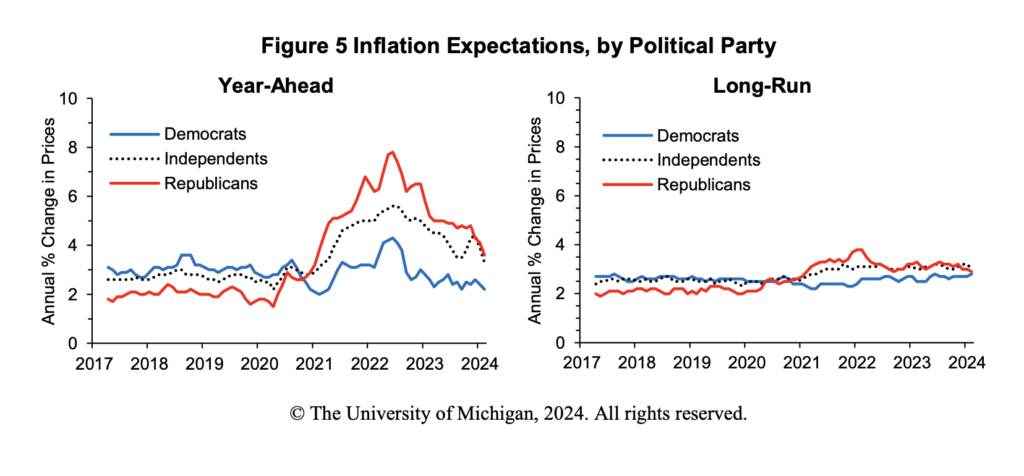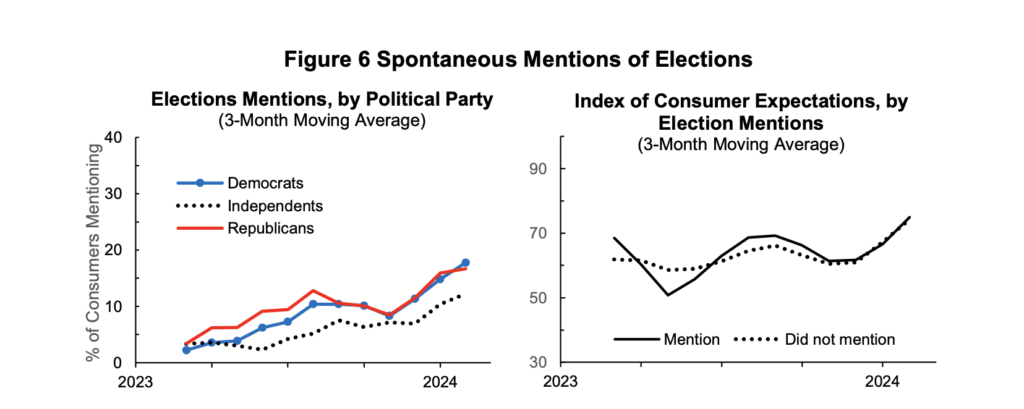Something old and, perhaps, something new
In January, Brookings’s Hutchins Center on Fiscal and Monetary Policy held a conference to identify, through agreement and disagreement, what we can learn from the pandemic. Louise Sheiner, David Wessel, and Elijah Asdourian, all of Brookings, just released their summary, “The US Labor Market Post-Covid—what has changed and what hasn’t?”
The first subhead covering the opening panel tells us one thing hasn’t changed, the ongoing debate on how to measure labor-market slack, central to the Fed’s mission. The authors note that because the unemployment rate was tracking other measures, such as the ratio of job vacancies and the number of unemployed (V/U), and the quit rate closely, it was “widely regarded” to be sufficient into 2019. Now with the unemployment rate about where it was before the pandemic, other measures suggest a tighter market, and many economists are no longer sure the rate is the “only important measure.” (And yes, many economists and analysts have never really thought that.)
As we don’t need to tell you, there was a lot of disagreement over which measures carry the most accurate information. Laurence Ball of John Hopkins offered two charts for his favored “rough and ready” indicator, one showing the unemployment rate dogging along at about 3.5% when inflation hit its highest level in decades, the other showing V/U peaking with inflation, suggesting a better match.
In their pushbacks, Julia Coronado of MacroPolicy Perspectives and others brought up what we called at the time the “mysterious rise” in job openings that began in 2008, a trend that cannot really be separated from the more recent period. Former BLS commissioner Erica Groshen added that digitation makes posting so easy that openings are up “across the board.” She likened that to the compounding number of college applications. “When I applied to college, my high school told us, ‘You can apply to five colleges….’ My kids were told twelve colleges, because it was electronic, and I think the next generation is being told something like twenty.” Coronado suggested the unemployment rate, the employment/population ratio (EPOP) of prime-aged workers, and UI claims are the winning trio.
The next subhead, which asks if measuring labor slack is important to understanding inflation, suggests something that is perhaps changing. Going beyond questions about the value of the unemployment rate on its own, the panel pointed out it is unclear that the “intuition” underlying the Phillips Curve, the trade-off between inflation and slack, is still viable. Noting that inflation is currently moderating without a “material weakening” in the labor market, Coronado calls the focus on V/U “dangerously misleading,” as to her it increases the chance the US will miss out on “a whole lot of employment.”
Her top-tier indications, the above plus sentiment surveys, indicate a labor market close to full employment, with signs of softening, as do her second, the gap between U-3 and U-6 unemployment rates (which captures those working part-time against their wishes, and those marginally attached to the labor force), unemployment rates by ethnicity and race compared to the white rate, hourly wages of production workers, and hires and quits rates. Looking beyond the summary to her details, she noted AI has “led firms to harvest resumes to train algorithms,” and that the openings rate is the only indicator suggesting a job market stronger than it as in the late 1990s. She believes analysts often focus too heavily on the effect of aging boomers, without paying enough attention to women’s “much stronger and more cyclical” attachment, and the issuance of work-eligible VISAs, which both show labor supply to be more “resilient, flexible and abundant than expected.”
Former Fed Vice Chair Don Kohn argued the two sides of the dual mandate should “feed each other,” and apparently most attendees were in the middle, questioning the vacancy rate, but in ‘fundamental agreement” that a “hot economy” with little slack can lead to inflation.
In a discussion of the Beveridge Curve’s, Aysegul Sahin, UTAustin, noted the surge in quits during the pandemic momentarily elevated job switching, and Justin Bloesch, Cornell, tagged a short-term deterioration in job-matching. Anton Cheremukhin, Dallas Fed, noted that early explanations of the Beveridge curve’s shift included all things Covid—isolation, fear, remote work, mismatches, and federal supports. But since they were largely gone by 2024, why does the inefficiency persist? He suggested, as he has before, that the trend in unemployment was typical for a short recession, while the trend in vacancies was abnormal even before the pandemic, driven by poaching, not so much efforts to engage the unemployed.
We’ve linked to his paper with Paulina Restrepo-Echavarria on that subject. Here it is again.
Although most argue that wage inflation leads price inflation, apparently a number of attendees suggested wage growth lags prices. Adam Shapiro of the SF Fed used CPI and ECI, both productivity-adjusted and raw, to demonstrate a better correlation between current inflation and future, rather than past, wage growth. He noted that when wages rise quickly they can inflate prices of non-housing services, but the increase is small, 0.15pp for each 1% increase in wages, and develops over four years. He suggested that when wage rates are following inflation, looking at quit rates and unemployment would be a more accurate measure of the Fed’s fight against inflation than wages themselves.
Kohn “expressed surprise” at this, and called easing rates with wages on the rise would be a “gutsy move.”
Participants agreed that although the pandemic caused a “substantial” tightening of the disparity between incomes of the bottom and top deciles, it did little for median-income workers, who also have been losing to the top decile for decades. They also pointed out that earnings compression of the pandemic was atypical — generally low-wage earners’ incomes improve because they work longer hours in strong economies, without the benefit of wage increases. Most were pessimistic gains among lower earners will be stable, without an assist from federal minimum wages, although some states are pegging minimum wages to inflation.
Upton Institute’s Brad Hershbein noted that although wages of the lowest decile grew most quickly, so did inflation pain, which dampens the wage effect. Participants were confused by the broad weakness in wage gains in the current labor market. Ball suggested supply-shock inflation might not have pressured wages, while others suggested the benefits of remote work may have stood in for higher wages and the recent increase of immigration is taking the pressure off as well.
There’s more. Slides and all else here, and worth a look.







A Letter to the Past
Professors Lusina Grigoryan, of York University, and Madalina Vlasceanu, of New York University, recently led a study on what works and what doesn’t in order to alter behaviors affecting climate change. The study included 60,000 participants in 63 countries, and 11 strategies, including gloom and doom, stressing the scientific consensus, and writing a letter from the future.
The large team was “quite surprised” to discover that 86% of the participants believe climate change to be a “serious issue,” that needs to be addressed, with 70% supporting “systemic/collective action,” something you might not think from reading the headlines.
That aside, the regional results were as skewed as you might guess. For example, stressing the 99% consensus among climate experts lifted support for climate-friendly policies by 9% in Romania, but lowered it by 5% in Canada.
A gloom and doom bombardment produced a 12% increase, the largest change, in the share of social-media enthusiasts willing to post pro-environmental messages, which seems to go with the territory, and may be part of the problem: Do those posts really do much?
Overall, the most effective strategy was devised by Grigoryan, lifting support for green policies by 9% overall, with a range of 10% in the US and in Brazil to very modest declines in the UAE, Serbia and India. Grigoryan asked participants to imagine their future selves writing a letter to a child close to them today, outlining what they would have done differently.